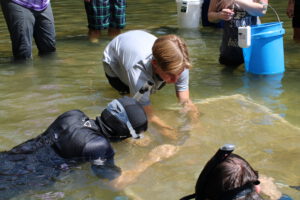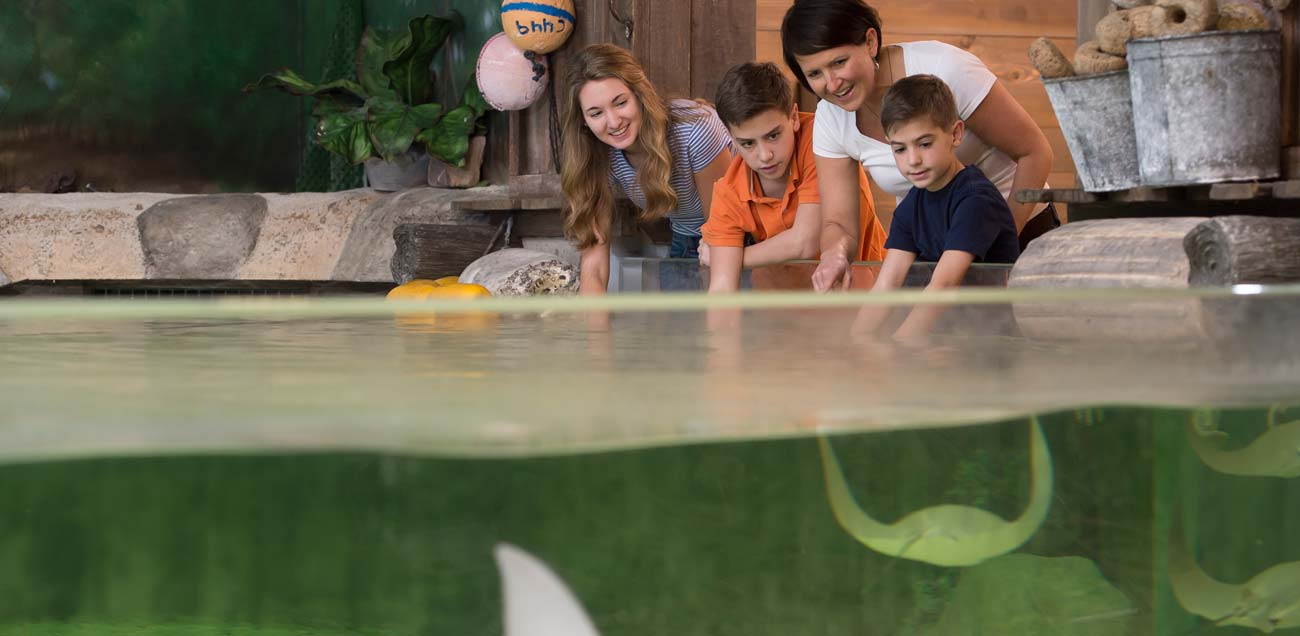Conservation Success is Just Around the Blue River Bend
While conducting routine surveys in southern Indiana in 2023, scientists found a juvenile hellbender salamander in the clean, cool waters of the Blue River watershed. It has been decades since anyone has seen a young, native-born hellbender in an Indiana river, and its presence signifies that the collaborative efforts between the Indiana Department of Natural Resources (DNR), Purdue University, and the Fort Wayne Children’s Zoo are paying off.
An eastern Hellbender is a large aquatic salamander with characteristics like a flat wide head, small eyes, and dark greenish brown coloration allow them to easily camouflage at the bottom of rivers and streams, where they spend their entire lives. Adults can grow as large as 30 inches but are typically smaller at only 12-15 inches. While this animal’s favorite food may be crayfish, they will also consume worms, mollusks, larvae, and small fish. The truly unique characteristics of an adult hellbender are extra folds of rippled skin along its midline. Hellbenders breathe through their skin and clean, well-oxygenated, fast flowing water is a must for their survival. The extra skin folds help increase skin surface area to aid in oxygen absorption.
Silt accumulation, agricultural and industrial pollution, warming waters, and changing the natural flow of our streams and rivers through channelization and damming are all factors contributing to the declining Indiana hellbender populations. Populations are also threatened by people who fear that they might be dangerous and take this gentle, shy creature out of its natural habitat. If you are lucky enough to see one in the wild, we encourage you to leave it exactly where it is.
The Fort Wayne Children’s Zoo partners with the Indiana DNR and Purdue University to hatch and raise young Hellbenders. In Fall of 2022, the Zoo received several hundred viable hellbender eggs, collected from a Kentucky river where they are not as rare. Since receiving them, the clutch has been carefully watched over and are growing rapidly. We currently have about 322 individuals that we hope to release once they have grown to a sufficient size.
Want to learn more about hellbender conservation? You can learn more with a Health and Conservation Wild Encounter! Visit these salamanders behind the scenes, meet their keeper, and learn how you can support the future of this endangered species. You can also learn more about the Zoo’s efforts here.
Learn More Below:
Researchers Discover Young Hellbender in Blue River, IN DNR (purdue.edu)
Conserving Hellbender Salamanders in Indiana (nature.org)

-Written by Keeper Dave and Environmental Quality Technician Jean

